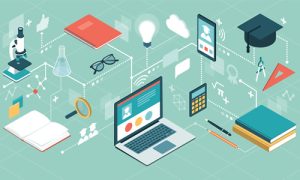Introduction:
In today’s rapidly evolving world, traditional educational methods are being reshaped by the advent of digital learning. As we celebrate Digital Learning Day 2024, this article delves into the profound impact of digital learning on education, illuminating its transformative potential and the opportunities it presents for both students and educators. Let’s embark on a journey to unlock the true potential of digital learning and its implications for the future of education.
Understanding Digital Learning: Redefining Education
Digital learning encompasses a broad spectrum of educational practices facilitated by digital technologies. From online courses and virtual classrooms to interactive multimedia resources, digital learning transcends geographical barriers and traditional constraints, offering unprecedented flexibility and accessibility to learners of all ages and backgrounds.
The Benefits of Digital learning Day 2024: Empowering Learners

Digital learning empowers learners by providing personalized, self-paced learning experiences tailored to individual needs and preferences. With a vast array of multimedia resources, interactive simulations, and collaborative tools at their disposal, students can engage with course material in dynamic ways, fostering deeper understanding and retention of knowledge.
Enhancing Educator Effectiveness: Tools for Teaching Success
Educators also benefit from digital learning platforms, which streamline administrative tasks, facilitate communication with students, and enable data-driven insights into student progress. By leveraging digital tools and resources, educators can create engaging learning experiences, cultivate critical thinking skills, and adapt teaching strategies to meet diverse learning styles.
Overcoming Challenges: Navigating the Digital Landscape
While digital learning offers immense opportunities, it also poses challenges such as the digital divide, privacy concerns, and the need for digital literacy skills. Addressing these challenges requires concerted efforts from policymakers, educators, and technology providers to ensure equitable access to digital learning resources and foster responsible use of technology in education.
Future Prospects: Towards a Digital Renaissance in Education
Looking ahead, the future of education is undeniably intertwined with digital learning technologies. As artificial intelligence, augmented reality, and adaptive learning algorithms continue to advance, the possibilities for personalized, immersive learning experiences are limitless. Embracing innovation and collaboration, we can unlock new frontiers in education and empower learners to thrive in the digital age.
The Role of Stakeholders: Collaborating for Success
Realizing the full potential of digital learning requires collaboration among stakeholders across the educational ecosystem. From policymakers shaping education policy to technology providers developing innovative solutions, each stakeholder plays a crucial role in driving positive change and fostering a culture of lifelong learning..
Table: Key Points of Digital Learning
| Key Points | Description |
|---|---|
| Personalized Learning | Tailored learning experiences catered to individual needs and preferences. |
| Accessibility | Overcoming geographical barriers and providing equal access to education for all. |
| Collaboration | Fostering teamwork and communication through virtual collaboration tools. |
| Flexibility | Adapting to diverse learning styles and schedules with self-paced learning options. |
| Data-Driven Insights | Leveraging analytics to track student progress and inform instructional decisions. |
Comparative Table: Traditional Learning vs. Digital Learning
| Features | Traditional Learning | Digital Learning |
|---|---|---|
| Accessibility | Limited by geographical location. | Accessible anywhere with an internet connection. |
| Interaction | Primarily face-to-face interactions. | Virtual collaboration tools facilitate interaction. |
| Flexibility | Fixed schedules and rigid curriculum. | Self-paced learning and customizable content. |
| Resources | Limited to textbooks and classroom materials. | Multimedia resources, simulations, and more. |
| Personalization | One-size-fits-all approach to teaching. | Tailored learning experiences for individual needs. |
Conclusion:
In conclusion, digital learning holds the key to unlocking the full potential of education in the digital era. By harnessing the power of digital technologies, we can empower learners, enhance educator effectiveness, and create inclusive, adaptive learning environments that prepare students for success in an increasingly complex and interconnected world. Together, let’s embrace the transformative power of digital learning and unlock a brighter future for education.




